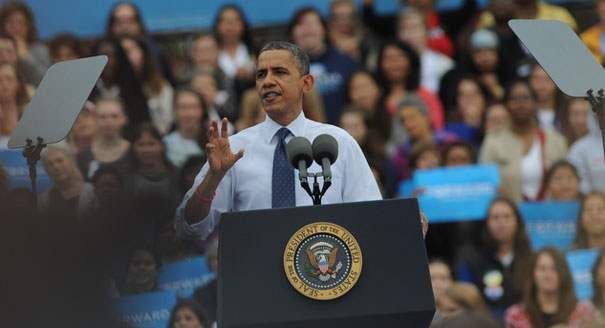A Memorable Message: Mitt Romney’s "Romnesia"
President Obama debuted a new stump speech late last week in which he accused Mitt Romney of suffering from “Romnesia.”
As Mr. Obama defined it, Romnesia occurs whenever his opponent tries to “forget” the policy positions he held during the primaries in an attempt to appeal to less conservative voters.
I strive to make this blog nonpartisan—so if you’re conservative, my advice is to read why I think this is such an effective political message—and then try to use the same elements when composing a message for candidates and causes you believe in.
Here’s an example:
“I do want to go over some of the symptoms with you. Because I want to make sure no one else catches it. If you say you’re for equal pay for equal work but you keep refusing to say whether you would sign a bill that protects equal pay for equal work, you might have Romnesia.”
In their terrific book, Made to Stick, authors Dan and Chip Heath identified six critical traits that make stories memorable. They were talking about stories, not political attacks. But I was struck by how many of these traits applied to Mr. Obama’s “Romnesia” attack. The Heaths used the acronym “SUCCESs” to summarize those elements (the final “s” doesn’t stand for anything.)
It’s no surprise that the “Romnesia” video went viral so quickly, as it had five of the six “SUCCESs” sticky traits:

1. Simple: President Obama could have just listed a series of items that he believed Mitt Romney has changed his position on. But doing so wouldn’t have been “sticky.” The word “Romnesia” says the same thing—but in a simple and highly memorable way.
2. Unexpected: The term “Romnesia” was unexpected for two reasons. One, because it’s a term we haven’t heard before but that neatly reinforces the President’s long-held contention that Mr. Romney is a shape-shifter. Two, because Mr. Obama has usually ceded this type of evocative language to Republicans (his opponents have done a much better job of using memorable language, such as “death panels,” “ObamaCare,” and “class warfare”).
3. Concrete: Mr. Obama used several specific examples to make his case on issues ranging from equal pay for equal work and contraceptive care to tax and coal policy.
4. Credible: Partisans may disagree on whether or not this attack was credible. But I’d maintain that Mr. Romney’s image as a flip-flopper was originally cemented by his Republican primary opponents, making this attack more credible than a typical partisan attack.
5. Emotional: This video isn’t “emotional” in the sense that it stirs the soul—but it’s “emotional” in the sense that it’s funny. Unlike the President’s first debate (in which he appeared to be sleepwalking), he appeared to be having fun here, as did the crowd.
6. Stories: This is the one “SUCCESs” element that Mr. Obama didn’t include in his presentation. But he added one element the Heath Brothers didn’t include on their list: humor. In this case, the humorous tone of his delivery helped the video go viral, reinforcing an argument the President has been trying to make for months—but with greater impact.
What do you think? Do you agree that this was an effective political attack, or do you have a different view? Please leave your thoughts in the comments section below.
Great assessment. Thanks for sharing!
And this is why I absolutely love this blog!